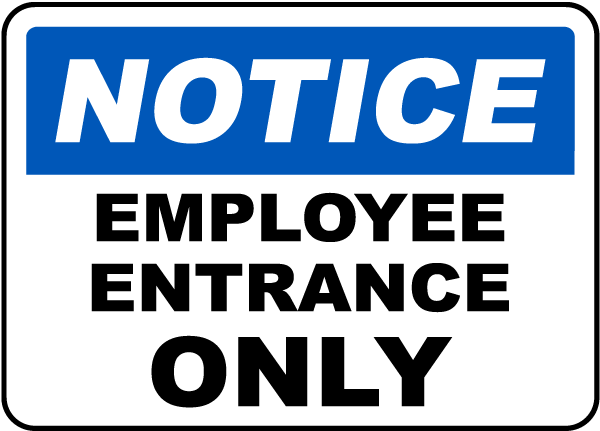Employees don’t need Netflix.
We have a general fascination with explaining new ideas by comparing them with popular existing ideas. “My app is like Uber but for dog walking.” “Our goal is to become the Airbnb of lawn chairs.” While there may be some cursory similarities between the new and familiar concepts, they tend to be fundamentally different when it comes to the problems they solve.
Enter the “Netflix for Learning,” an increasingly-common way people are describing the “modernization” of workplace learning strategy. Vendors are calling themselves the “Netflix for Learning.” Conference presenters are including Netflix as an example of what L&D pros should be building for their companies. The phrase even went mainstream via CNBC and their recent article “Employers buy in ‘Netflixization’ of executive education.”
Did we do a deep dive into Netflix and its principles and find that they can really help us solve meaningful workplace learning problems? Or did we take an experience that everyone knows, slap the word “learning” on it and market it as a new approach when its really not?

Like so many other L&D topics, “Netflix for Learning” means something different to everyone. The concept tends to focus on three elements: UI, catalogs and recommendations. Every LMS is launching a redesigned interface that looks like my Netflix feed (above). Rather than list online training content with links and icons, now they use clickable boxes with featured images. And, rather than relying on content to be searched or assigned, the LMS is now suggesting courses based on factors like role, department and past content consumption.
Do these practices create a better LMS experience than employees have typically had in the past? Yes. Do they create a better learning experience that results in improved business performance. No!
An LMS is still an LMS
The problem with an LMS isn’t the UI (although many are quite bad). It’s the overall concept. For some reason, we believe employees need a dedicated hub for everything they may need to learn. The LMS has always been a poor digital replacement for a classroom. The truth is no one goes to work thinking “what do I want to learn today?” They’re too busy working to spend hours exploring your LMS catalog. Why would a more familiar UI make them come back?
A modern approach to workplace learning requires L&D to fit support opportunities in the everyday workflow. This could mean literal workflow-based performance support. It could mean short-form practice and reinforcement activities that are positioned within the work. It could mean formal training activities away from the workflow – but only when absolutely necessary. The LMS experience, even with the Netflix overlay, typically doesn’t fit within the everyday working experience for the average employee.
Netflix is Content-First
Netflix is a giant content library. Sure, there’s plenty of data on the back end shaping how that content is curated and presented. But it’s still just a content library. The Netflix of Learning metaphor proliferates a fundamental flaw in the traditional L&D mindset: that our job is to build and serve content.
Yes, content will continue to be part of the workplace learning experience. However, it is only a small part of how people learn to do their jobs. People learn through experience (see 70/20/10). People learn through conversation. People learn through practice. People learn through reflection. Our mindset – and our tools – should align with this reality and not rely on a content catalog, even if it’s a pretty catalog filled with nifty content.
Insufficient Data = Limited Recommendations
Look at the screenshot of my Netflix account above. Because I watch Breaking Bad, the system suggested I should also watch Narcos, Sons of Anarchy and Sherlock. I don’t like those shows. Sure, I like Black Mirror, but I could have wasted considerable time consuming content that isn’t for me because other people who watched what I watch happen to like those things. Think about it. How often does Netflix actually recommend something you want to watch? And how difficult is it to discover new content that isn’t recommended?
This is what happens when a platform has limited data on its users to drive recommendations. The same is true for an LMS. The LMS knows your title, department, manager, team and maybe a few other basic demographic details. It also knows what training you’ve completed in the past and MAYBE a set of expected competencies for your role. This is an incomplete profile because it doesn’t include any data on how you are PERFORMING. Furthermore, it’s very unlikely that a course will solve my real-world performance problem in a timely way.
To make resource recommendations applicable in the workplace, a wide range of data, including demographic, knowledge, behavior and results data, must be analyzed on a personal and organizational level. “Content” must also be expanded beyond courses and job aids to include all types of support engagements. Only then can the right intervention be suggested at the right time to the right person to solve the right problem. Rather than gravitate to the limited Netflix metaphor, L&D pros should explore how people analytics can drive truly personalized and adaptive learning experiences.
Netflix Is Designed for Binging
Netflix wants you to watch more Netflix – just like YouTube wants you to watch more YouTube. Streaming platforms exist to get more people to consume more content. Netflix is specifically interested in getting you to consume their $13 billion of new TV shows and movies. More eyes = more subscription fees = more ads = more revenue. That’s the model (or an oversimplification of the model).
This is the opposite of what we should be trying to do in workplace learning. We should design support experiences that require as little time as possible. People don’t go to work to learn. They go to work to do their jobs. Yes, L&D should be there to support them whenever they need help. Sure, sometimes people will attend structured programs to learn more complex and critical skills. However, if we’re doing our jobs correctly, training should require as little time (and content consumption) as possible. More content does not equal more learning. Actually, it tends to mean less.
Employees don’t need a Netflix for Learning. Or an Uber for Learning. Or an Amazon for Learning. L&D pros can benefit by taking inspiration from consumer experiences. However, we must contextualize useful tactics to the realities of our work. I once built a video-based experience to facilitate practice sharing across the organization. It looked a lot like YouTube. I didn’t call it “YouTube for Learning,” and it didn’t work exactly like YouTube. I borrowed pieces of the YouTube UI to simplify the experience for employees because most of them already knew how to navigate YouTube.
L&D must work with stakeholders, partners and employees to shape a support experience that fits the unique needs of our organizations. This requires a meaningful blend of tools, tactics and content that aligns to the realities of how people learn and the workplace environment. Your experience may include some courses. It may include data-driven recommendations. But it should also include plenty of targeted practice, coaching, reinforcement and reflection. That’s not Netflix.
What do you think about the concept of a Netflix for Learning? Have you seen success in applying this idea? Or is the metaphor misguided and potentially problematic for L&D pros looking to modernize their practices?



